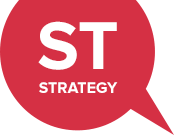Audiences
Define your target audiences before you select the best way to reach them. Focus on those best positioned to directly determine the success or failure of your goal.
More often than not your audience segments will be self-evident. It might be City Council members who will vote on the number of new low-income housing units to your neighborhood. Or consumers deciding whether or not to buy genetically modified produce. Whatever the case, it is imperative that you clearly identify, as narrowly as possible, the people you need to reach and influence with your communication.
Given that much of our work is focused on policy change in one form or another, it is also important to remember that policy change is determined not by faceless, governmental cyborgs, but by living, breathing humans who have jobs and families and utility bills and kids in school — just like everyone else.
Be careful to avoid the pitfall of stratifying your audiences into imprecise subsets like “voters” and “electeds.” After all, policymakers are people too, and they are motivated by many of the same factors as the citizens they represent.
What matters is that you identify and target your audiences with as much precision and specificity as possible. Once you do so, your subsequent strategic choices will be much simpler to make.



